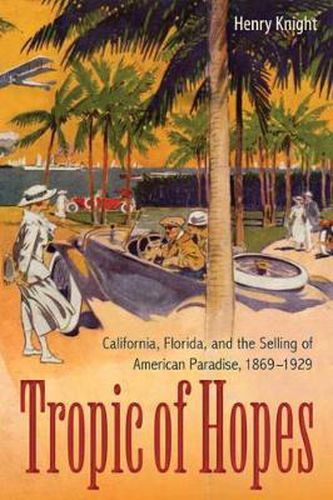Readings Newsletter
Become a Readings Member to make your shopping experience even easier.
Sign in or sign up for free!
You’re not far away from qualifying for FREE standard shipping within Australia
You’ve qualified for FREE standard shipping within Australia
The cart is loading…






This title is printed to order. This book may have been self-published. If so, we cannot guarantee the quality of the content. In the main most books will have gone through the editing process however some may not. We therefore suggest that you be aware of this before ordering this book. If in doubt check either the author or publisher’s details as we are unable to accept any returns unless they are faulty. Please contact us if you have any questions.
Pushes aside the palm fronds celebrated by boosters to explain how the nineteenth-century frontiers of barren southern California and waterlogged southern Florida were reimagined as havens for American leisure and agriculture. This is the story of the birth of modern America. –Anthony J. Stanonis, author of Creating the Big Easy: New Orleans and the Emergence of Modern Tourism, 1918-1945 A refreshingly original and subtly nuanced study of how nineteenth- and twentieth-century boosters sold Florida and California as ‘semi-tropical’ lands worthy of serious attention. With clarity and insight, Knight provides an instructive and provocative look at the peculiar machinations of identity formation in America. –Rebecca McIntyre, author of Souvenirs of the Old South: Northern Tourism and Southern Mythology After the Civil War, two states emerged as America’s paradise destinations. Transformed from remote, sparsely populated locales into two of the most publicized destinations in the country, California and Florida also became the most desirable. Private companies, state agencies, and journalists all lent a hand in creating the seductive, expansionist imagery that promoted the semitropical states, selling the idea of an attainable paradise within the United States. Henry Knight examines and compares the way the two states were promoted, adding to existing historiographies on California and Florida while providing expert analysis of how railroad kingpins, land barons, agriculturalists, and chambers of commerce invented and popularized an image of these states as the American Paradise.
$9.00 standard shipping within Australia
FREE standard shipping within Australia for orders over $100.00
Express & International shipping calculated at checkout
This title is printed to order. This book may have been self-published. If so, we cannot guarantee the quality of the content. In the main most books will have gone through the editing process however some may not. We therefore suggest that you be aware of this before ordering this book. If in doubt check either the author or publisher’s details as we are unable to accept any returns unless they are faulty. Please contact us if you have any questions.
Pushes aside the palm fronds celebrated by boosters to explain how the nineteenth-century frontiers of barren southern California and waterlogged southern Florida were reimagined as havens for American leisure and agriculture. This is the story of the birth of modern America. –Anthony J. Stanonis, author of Creating the Big Easy: New Orleans and the Emergence of Modern Tourism, 1918-1945 A refreshingly original and subtly nuanced study of how nineteenth- and twentieth-century boosters sold Florida and California as ‘semi-tropical’ lands worthy of serious attention. With clarity and insight, Knight provides an instructive and provocative look at the peculiar machinations of identity formation in America. –Rebecca McIntyre, author of Souvenirs of the Old South: Northern Tourism and Southern Mythology After the Civil War, two states emerged as America’s paradise destinations. Transformed from remote, sparsely populated locales into two of the most publicized destinations in the country, California and Florida also became the most desirable. Private companies, state agencies, and journalists all lent a hand in creating the seductive, expansionist imagery that promoted the semitropical states, selling the idea of an attainable paradise within the United States. Henry Knight examines and compares the way the two states were promoted, adding to existing historiographies on California and Florida while providing expert analysis of how railroad kingpins, land barons, agriculturalists, and chambers of commerce invented and popularized an image of these states as the American Paradise.